The numerical input problem:
reading numbers from input in
Java
- Java's
library method to
read
integer typed
input:
import java.util.Scanner;
public class NumInp
{
Scanner in = new Scanner(System.in);
int x;
x = in.nextInt( );
...
}
|
- The
nextInt( ) is
as
follows:
public int nextInt( )
{
String s = next( ); // Read the number as String (ASCII codes)
return Integer.parseInt(s); // Convert to int and return it
}
|
|
Why is
number input so
difficult while
writing numbers in a program so
easy
- Integer numbers
used in
a computer program:
int myFunction( )
{
int x = 15; // Program can use numbers easily
}
|
- Integer numbers
read in from
the input (= keyboard) into
a computer program:
import java.util.Scanner;
int myFunction( )
{
Scanner in = new Scanner(System.in);
int x;
x = in.nextInt( ); // User enters "15"
}
|
-
Why
is the
latter so
much more
complicated ???
|
Compile-time versus
run-time
events
Compile-time
events happen
during the
translation of
a
source program (Java, C, etc)
to
machine code:
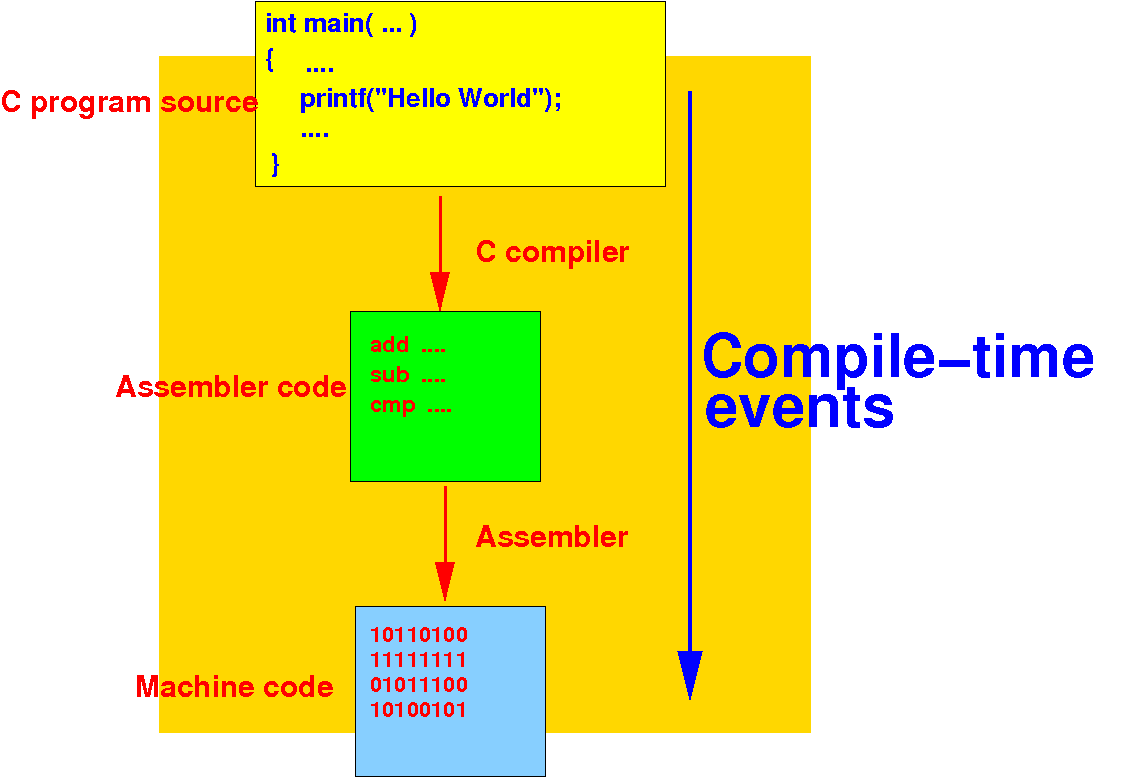
Translation of
constants used
inside source
program
Review:
integer constants
(used in calculations) in
the source program
are translated into the
2s complement representation
by the compiler:
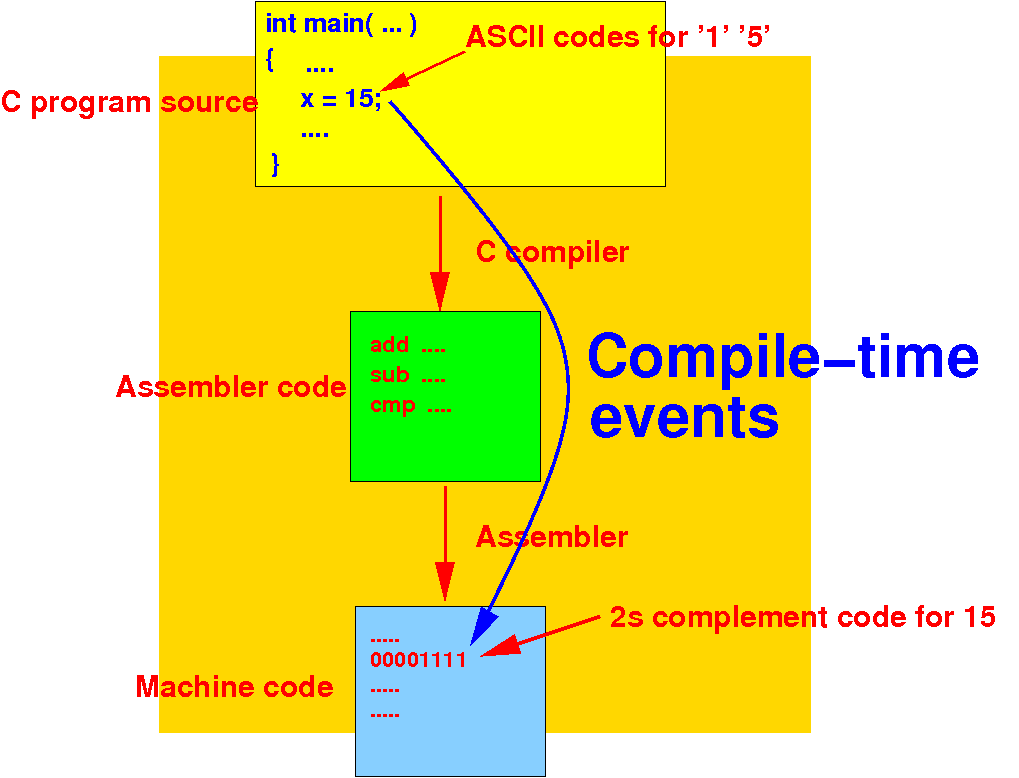
Compile-time versus
run-time
events
Run-time events:
are
events that happen
during the
execution of
a
machine code
program:
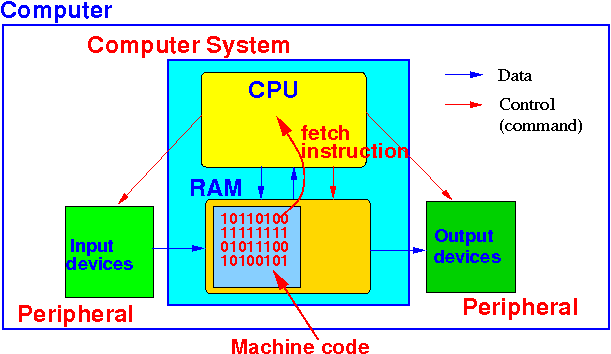
Run-time
events
happen
after the
compilation process !!!
Important note:
during the
run-time, the
compiler
is not running !!!
Compile-time versus
run-time
events
Run-time input:
a running program can
read
numerical input from
the keyboard:
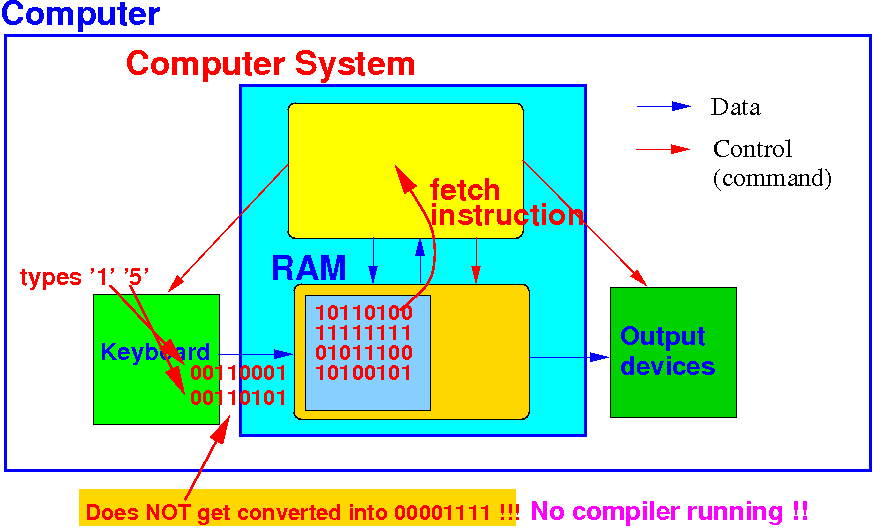
Important reminder:
run-time
numeric inputs from
keyboard are
received as
ASCII codes
The numerical input problem -
illustrated
Recall that when
you enter
numerical input into a
running program, the
data is
stored as
ASCII code in
memory:
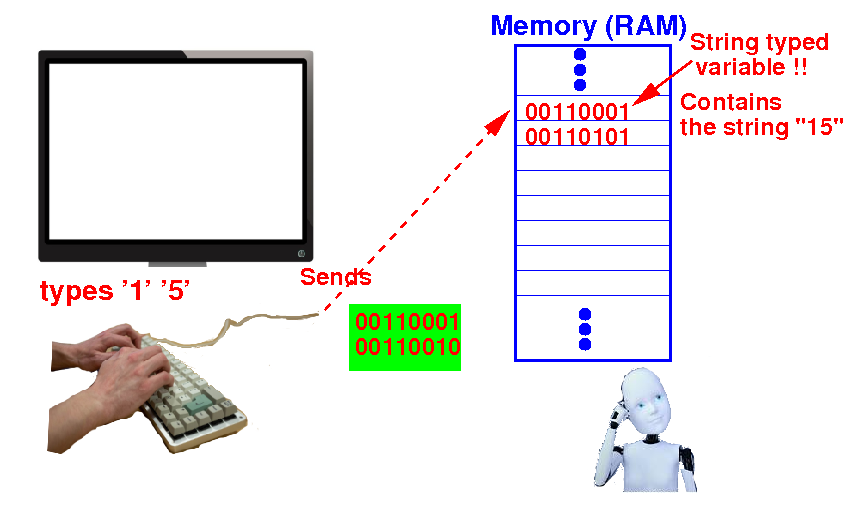
The ASCII code data is
not converted into
2s complement code
(compiler is not running) !!
The numerical input problem -
illustrated
The numerical data in
ASCII code
must be converted into
2s complement code
before
the program can
use it
in computations:
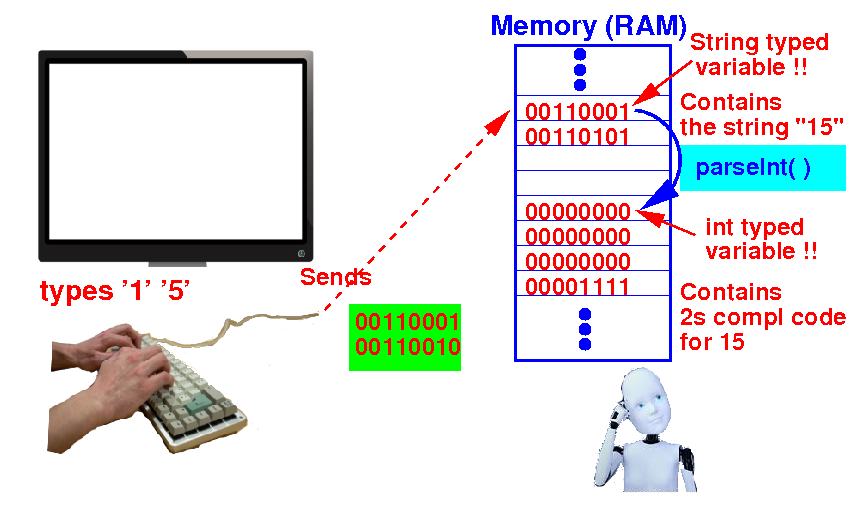
Converting a
ASCII coded number
⇒
2s complement code
is
a little bit
complicated !!
The app shows the
need to
convert number string ==> 2s compl code
Keyboard inputs
can only allow users to
enter a number string
in ASCII code:
- When user types this input
- The computer program will
receive the following:
|
Very important fact:
- The compiler
will/can not
process data
entered in an
input operation
(while the
program is
running
- Therefore, the
program
must
convert the
number string (e.g. "12") to its
2s complement representation
(e.g. 00001100) using
an
algorithm (= parseInt() !
|
Order of discuss
I will explain the
conversion algorithm
(used by
a program)
in a piece meal fashion:
- First, I will show you a
naive solution
that is simple to understand
what we need to do
- Next, I will show you a
simple solution that
can only convert
a number string that
consists of exactly
1 character
- Then, I will show you a
more complex solution that
can only convert
a number string that
consists of
exactly 2 characters
- Final, I will show you the
general solution
|
❮
❯





